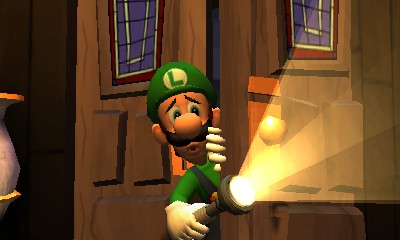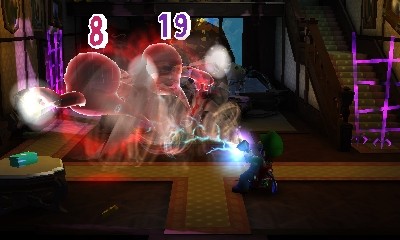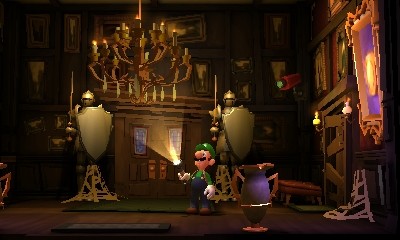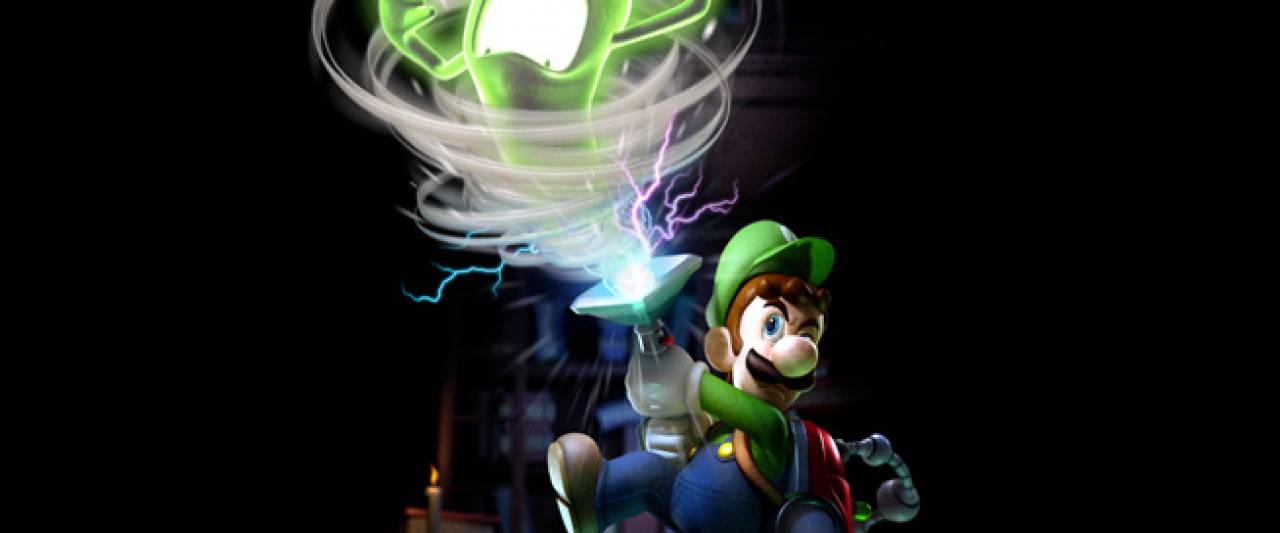Luigi has always been Mario's secondary, the brother of a beloved hero whose own cowardice is perhaps his most clearly defined trait. We know Luigi as the scaredy-pants Mario brother, a man who is as anxious as Mario is adventurous. He's a comic relief character who rarely gets to step out into the spotlight. Maybe it's because of that fact that I so often cherish those rarified moments when he does. It certainly would explain my adoration for Luigi's Mansion on the GameCube. What a weird and wonderfully silly game that was. Sure, it was painfully short, and barely had enough going on mechanically to qualify as more than a neat technical showpiece for Nintendo's then-new console, but it was also incredibly fun, not to mention adorably goofy. More to the point, it was the best example of the time that Luigi could very easily front his own game, if given the proper set-up and execution.

I don't know that it needed to take twelve years for someone to make good on Luigi's Mansion's initial promise, but we should just be glad that something finally has. Luigi's Mansion: Dark Moon for the 3DS, from Punch-Out!! developers Next Level Games, is a much more thoughtfully fleshed-out version of what the original game offered. It is a far more lengthy, content-rich adventure filled with pratfalls, panic, and more than enough clever puzzle solving to keep players engaged for hours. However, even better than any of that, Dark Moon is perhaps the best representation of Luigi as a character yet seen. Next Level clearly understands the tendencies of Mario's perpetually petrified twin, amplifying them to tragicomic levels of silliness.
Insomuch as any game in the Mario universe has a plot, Dark Moon does as well. You may or may not remember Professor E. Gadd from the GameCube game, but no matter. He's back again, roping a deeply reluctant Luigi into another bout of ghost adventuring for the purposes of paranormal science, as well as the reconstruction of a gem called the "dark moon," which has a sort of calming effect on the spectral entities than inhabit Gadd's strange little valley. Of course, a big ol' Boo comes along and cracks it, turning all of Gadd's helpful ghosts into politely anarchic poltergeists. Again, this is a Mario universe game, so nothing really "scary" happens, so much as the kind of comedic spookiness one might find in a typical Scooby Doo episode.
But that's fine, because Dark Moon does this particular brand of ghostly humor exceedingly well. Luigi is animated with tremendous expressiveness. He quakes and chatters and shivers with fear so often that you halfway expect him to have a coronary halfway through. More importantly, Dark Moon has a great sense of comic timing. It knows how to set the player up for a good pratfall, and delivers the goods in nearly every event. What's extra great is that the game doesn't constantly pull you out of the experience to tell its jokes. Most of them are told in-engine as Luigi interacts with different pieces of the environment. The cutscene work is all good too, but I was more impressed with how the game allowed its comedic bits to build-up largely through gameplay and exploration.
Through all this expressiveness and humorous narrative, Luigi becomes an incredibly endearing character. You feel bad for the guy, knowing all he wants is to not be wherever the heck he is at that very moment. By the same token, he's presented as just capable enough to not create any weird dissonance between his success and his constant terror.
Succeeding requires you to find all the missing pieces of the dark moon, though in-between those battles with major boss ghosts, you'll mostly be wandering around one of a few different haunted environments, looking for keys, gems, and other hidden objects scattered about by the antagonistic apparitions. Progression largely takes the form of light puzzle solving. Uncovering hidden doors, passages, and objects is your primary task, though occasionally, you'll have to bust some ghosts as well.

Doing so is handled a bit differently than in the original game. Here, ghosts have to be stunned before you can grab them with your handy ghost-sucking vacuum cleaner. You do this with a flashlight that sends out a high-intensity light burst, which must be briefly charged before use. Once you have the ghost stunned, all you have to do is fire up the vacuum, and pull back as hard as you can against whatever direction the ghost happens to be fleeing in. While there is a fairly diverse array of spirits to battle against, the mechanics for battle largely remain the same throughout Dark Moon. Really, the only challenge is keeping away from other spirits' attacks as you battle against the ghost you're trying to wrangle.
Which isn't to say that isn't challenging. In fact, Dark Moon can be a tough little game. The combat isn't ever too hard, though when you're battling against a group of ghosts, you'll have to be nimble and careful to stay out of their various attack paths. The game's puzzles can be equally tough, especially in the later goings of the game, which sometimes rely a bit too heavily on opaque environmental challenges that, despite having relatively obvious solutions in the end, don't always present the clearest path to progress.
Really, if I have any major complaint about Dark Moon, it's that it actually runs a bit too long. That's sort of a ludicrous sounding complaint if you ever played the original game, which could be finished in just a couple of hours. However, while Dark Moon makes up for that game's dearth of content, not all of its content is all that worth playing through. Every one of the game's environments has at least one or two level sections that feel completely extraneous. Due to Dark Moon's somewhat more handheld-friendly structure, wherein you are pulled in and out of environments between levels by Professor Gadd for a quick game save, the game is forced to come up with reasons to keep pulling you in and out. While all of these scenarios are tied into the inherent mischievousness of the ghosts, eventually it gets old, especially when it starts recycling the same objectives in only moderately different environments. That the game's puzzles and gameplay mechanics are often good enough to push you past those more tedious bits with only minimal grumbling is a testament to how fun Dark Moon can be when it's at its best.
What was really impressive to me--and I'm as shocked as anyone by this--is how Dark Moon uses the 3D capabilities of the system to its benefit. Look, I think 3D in most 3DS games is about as necessary as the continued existence of Waluigi, but in Dark Moon, the 3D mixed with the game's diorama-style camera presentation gives every environment a sense of depth that makes exploration a great deal more fun. It's a sincerely terrific use of 3D in a time when anything 3D looks pretty much passé and annoying, so I'll understand if you're skeptical. If you do plan to play Dark Moon, just do me the one favor of at least trying the 3D for a few minutes. I don't think you'll be disappointed.

Another neat, if perhaps unnecessary addition is multiplayer. Up to four players can take on a multilevel tower filled with ghosts and either cooperative or competitive objectives, which range from simple ghost hunts, to frantic searches for floor exits while racing against the clock. All these modes are actually pretty fun, especially when played with people who have a decent sense of what the hell they're doing. And there's even more clever animation work to be found here, with funny little bits featuring differently-colored Luigis fanning each other with their hats after they "faint" (run out of health), or trying to knock jars off one another after a ghost plops one down on a player's head. While I don't necessarily feel any strong need to go back to the multiplayer after a few hours of messing with it, I expect some people will like it a lot.
Dark Moon takes what was basically a really good sketch of a game in the original Luigi's Mansion, and fleshes it out into a more robust, and arguably far more entertaining romp, all while retaining the distinctive flavor of that first game. It might overstay its welcome a bit, but I doubt anyone who loved the original Luigi's Mansion in spite of its paltry adventure length will complain too terribly much about having a lot of Luigi's Mansion to play. Especially when it's as well executed as Dark Moon is.
